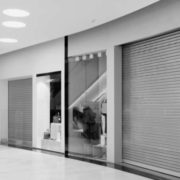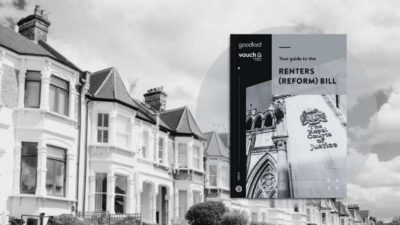Local authorities own enough unused small plots of land to build 1.6 million homes, a new study has revealed.
New research, using data from Land Registry and Nimbus Maps, has found that councils in England and Wales own almost 320,000 unused “small sites”.
The sites are all three acres or less – but when combined cover a total of nearly 100,000 acres, or 400 square kilometres.
That is an area roughly the size of Birmingham and Manchester put together.
All the sites are listed with the Land Registry as having no use and no existing buildings.
Using hyperlocal data, researchers were able to work out the average residential density on every street on which each of the almost 320,000 small sites stands.
This hyperlocal data was used to calculate how many homes could be built on each site without significantly changing the average housing density of a local area.
In all they found 318,183 unused small plots covering 99,238 acres of land.
When combined, the small sites could accommodate a total of 1.6 million homes, providing enough living space for 3.8 million people at national average occupancy rates of 2.4 people per property.
The analysis comes with the Government under huge pressure to deliver more new housing after it downgraded a manifesto pledge to build 300,000 new homes a year.
Supply was already falling well short of that total, with 174,940 completions in 2021.
Overall, Kent council owned the biggest number of unused small sites, with 10,332.
The full top 10 looked like this:
- Kent – 10,332 sites
- North Yorkshire – 5,854
- Durham – 5,590
- Birmingham – 4,933
- Devon – 4,867
- Surrey – 4,808
- Lancashire – 4,462
- Sandwell – 4,175
- Leeds – 3,745
- Cornwall – 3,743
Some 79,172 unused plots of land – covering 24,098 acres exist in areas covered by combined authorities.
These are collections of councils that can pool powers and strategy over a range of policy areas, including housing.
If the ten combined authorities in England followed a refined example of London’s Small Sites x Small Builders scheme – a programme designed to unlock land for SME housebuilders – then the data shows this could unlock enough space to build 457,000 homes.
The North East combined authority is the regional authority with the space to build the largest number of homes.
The data shows that 84,737 homes could be built on unused small plots of land owned by local authorities belonging to the North East Combined Authority, 84,492 homes on land belonging to councils in the West Yorkshire Combined Authority area and 62,484 homes on land belonging to councils which are part of Greater Manchester Combined Authority.
Unlocking small sites for SME housebuilders has long been seen as part of the solution – but SMEs have faced significant barriers to accessing appropriate sites, and securing planning permission and funding.
The Government’s 2017 Housing White Paper reported that the number of homes registered by SME housebuilders fell from 44,000 in 2007 to just 18,000 eight years later.
In the most recent Federation of Master Builders annual survey, 63% cited ‘lack of available and viable land’ as the biggest reason they weren’t able to build more homes.
Some 71% said that the number of small site opportunities was decreasing.
In light of the new research, LDS have published a policy paper calling for new rules to help unlock small sites for SME housebuilders.
Combined authorities – or individual councils, in areas where no combined authorities exist – would identify brownfield sites suitable for housing and hold a simplified procurement process for SME housebuilders with a turnover below an agreed threshold.
Decision-making would be based on simple criteria including not just deliverability but also the degree to which the proposals increased affordable housing supply, created skills and jobs in the local area, and used local supply chains.
The paper also calls for streamlined planning processes, with councils applying to themselves for outline planning permission for housing once sites have been identified.
This would not only speed the process but also provide SME housebuilders with greater certainty and improve their ability to secure funding.
By adopting this model councils in combined authority areas could offer a wider range of SMEs a wider choice of sites – thereby increasing the chance of matching sites with housebuilders.
Mark Hawthorn, CEO of LDS Sales Guarantees, the company responsible for the research, said:
“Accessing suitable land parcels remains a principal challenge for SME housebuilders.
We understand why councils focus on large plots of land to deliver housing at volume.
However, our analysis demonstrates a plethora of small sites owned by local authorities, the majority of which, if identified and disposed of correctly, can breathe new life into the SME housebuilding revival.”
Chris Carr, managing director of Carr & Carr Builders, and National Vice President of the Federation of Master Builders, said:
“I warmly welcome the findings of this data and policy paper from LDS Sales Guarantees for outlining the size of the prize for both councils and SMEs and also importantly for shining a light on how we can work together to unlock this opportunity.
SME housebuilders need small plots of land; this data shows councils have large swathes of unused small plots.
While some parcels of this land will be more suitable for development than others, what we need to do is to create a mechanism to unlock these unused small plots of council land for SMEs.
The model proposed by LDS Sales Guarantees outlines an interesting template which could be modified and rolled out to combined authorities and local councils across England.
I would urge council place departments to read this report to see if there is a policy we can build on to unlock thousands of small sites for SME housebuilders.”
Andrew Lewer MP, Chair of the APPG for SME House Builders, said:
“I welcome the findings of this study from LDS Sales Guarantees for highlighting that local authorities own significant portfolios of small sites and for putting forward recommendations to unlock them.
These sites often go unnoticed and unutilised.
That is why I put forward a pro small site development amendment into the Levelling Up Bill and fought to get government support for them.
Unlocking this problem could mean more than just much-needed extra housing.
It could also bring a much-needed boost to local economies across England and Wales by creating new jobs in the construction sector and boosting the wider supply chain, with particular benefit for small and medium sized housebuilders.”
| Combined Authority Name | Sites Owned | Total Acres | Potential New Units (at same housing density as neighbouring sites) |
| Total (all combined authorities) | 79,172 | 24,098 | 457,480 |
| West Midlands | 18,012 | 3,111 | 45,360 |
| North East | 10,270 | 4,237 | 84,737 |
| West Yorkshire | 9,985 | 3,739 | 84,492 |
| Greater Manchester | 9,208 | 3,057 | 62,484 |
| Liverpool City Region | 8,348 | 2,189 | 42,524 |
| Tees Valley | 5,792 | 2,098 | 39,201 |
| South Yorkshire | 5,589 | 1,541 | 25,929 |
| West of England | 5,219 | 1,688 | 29,811 |
| North of Tyne | 3,540 | 1,230 | 26,095 |
| Cambridgeshire/Peterborough | 3,209 | 1,208 | 16,847 |





















Comments